Heading counterclockwise on the Around-the-Mountain Trail, the first 0.3 mile, up to its crossing of the Mount Prospect Auto Road (aka Mountain Road Scenic Byway), is a bulldozed dirt corridor, presumably widened for snowmobiling. In this section it coincides with the New Hampshire Heritage Trail.
The trail crosses the road just uphill from a large parking area, outside the gate that closes at 5:00 pm. The gently winding road, 1.6 miles long with a vertical rise of 600 ft., is a popular pedestrian route to the summit of Mount Prospect.
Much of the Around-the-Mountain Trail provides pleasant woods walking.
At 0.4 mile the NH Heritage Trail branches off. It doesn't look like it gets much use.
Towering white pines.
On the SW side of the mountain was a section of trail that was badly overgrown. No ticks, but I wouldn't want to walk through here in morning dew or rain.
There is a variety of plant life along this trail, including this clump of northern white cedar.
At the end of the overgrown section was a short stretch that had been mowed. Hopefully this will continue through the overgrown section.
Just before the junction with the Davidge Path, an opening a few steps to the right of the trail provides a view across a field to North Twin, Garfield and Lafayette.
I made the side trip up Davidge Path, which climbs 0.2 mile and 200 ft. up to the auto road.
A short distance farther up the road is an overlook with a restricted view to the SW.
I dropped back down Davidge Path and continued along Around-the-Mountain Trail, passing an old stone wall.
The eastern side of the loop trail is a delightful woods walk with several ferny sections and a more remote feel.
Nice and open.
Birches.
A gorgeous glade of sugar maples.
On the NE side of the mountain the trail passes through an extensive sugarbush operation, with many tap lines.
Ferns, sugar maples and tap lines.
With evening coming on, I turned onto the Old Carriage Path for a 500-ft. climb to the summit of Mount Prospect.
Most of this trail was a pleasant, moderate climb.
Saw lots of purple flowering raspberry on these trails.
One section of the Old Carriage Path is badly eroded.
A walk of 0.3 mile from the top of Old Carriage Path along the auto road brings you to the top. At the summit is the mansion built in 1912 by John Wingate Weeks, a Lancaster native who was a U.S. Congressman and Senator from Massachusetts and also served as Secretary of War. He sponsored the 1911 Weeks Act, which authorized the creation of National Forests in the East, including the White Mountain National Forest. The mansion is an historic site normally open to the public in summer and fall, but it is closed this year for an extensive renovation. This summer the popular Weeks State Park Association Thursday evening lecture series is being held at the NH Forests & Lands building in Lancaster.
Summit sign.
John W. Weeks had a stone observation tower built at the summit. It's closed during the off-season, but is open Wednesday - Sunday from 10 am to 4:30 pm. in summer and fall.
A beautiful bench honors the late Iris W. Baird, longtime supporter of Weeks State Park, and an authority on New Hampshire fire tower history.



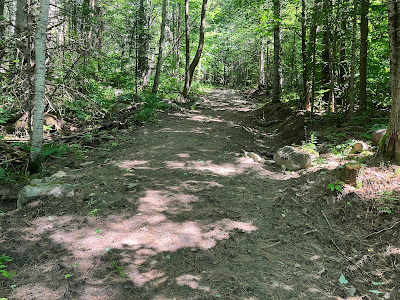






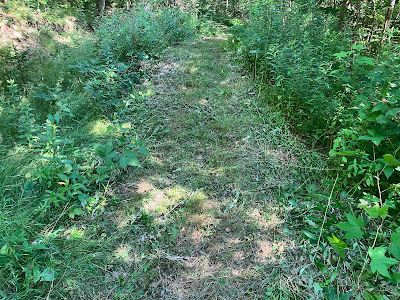

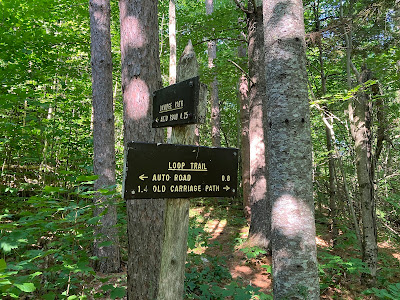












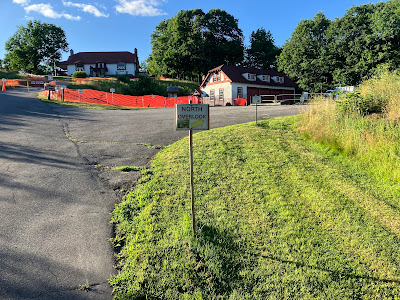









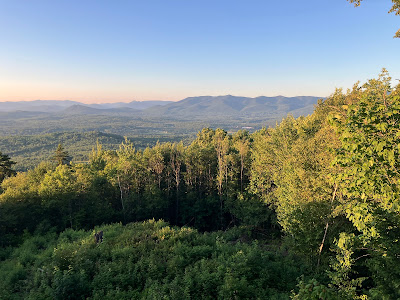
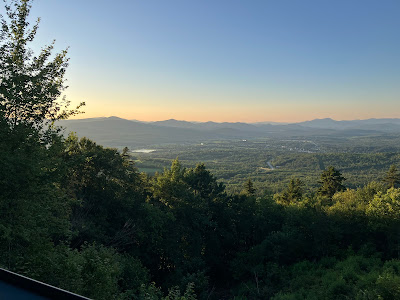






No comments:
Post a Comment